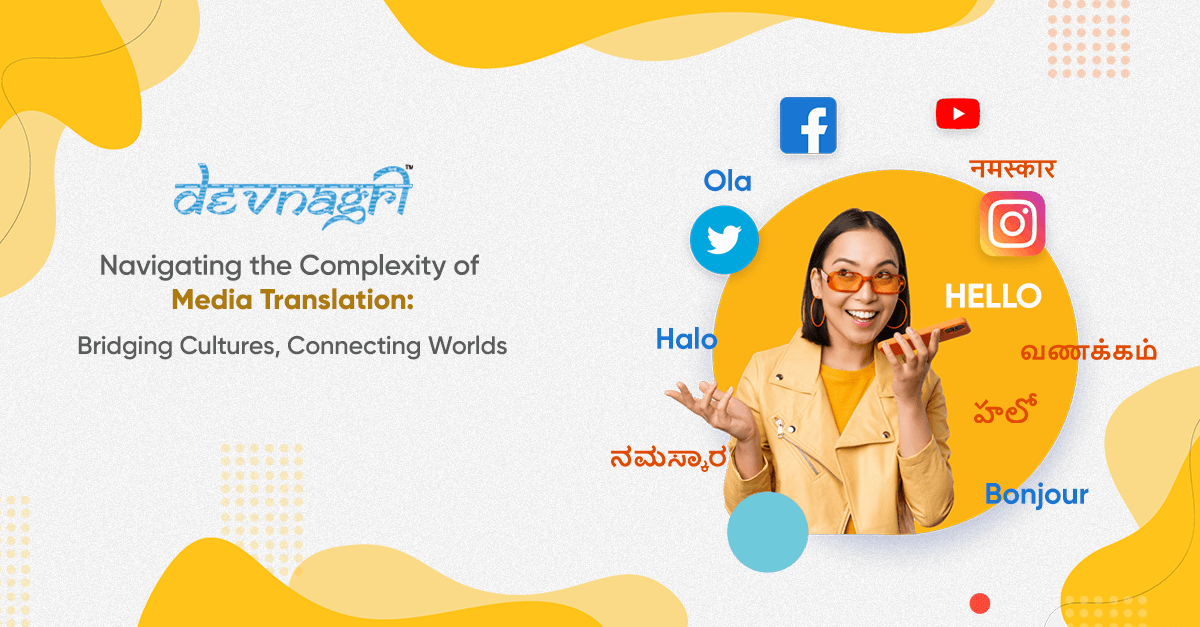
In today’s interconnected world, where boundaries blur and information flows freely across borders, the role of media translation has become more crucial than ever before. From news articles and social media posts to movies and television shows, media translation serves as the bridge that enables cultural exchange and understanding among diverse audiences worldwide. In this article, we’ll delve into the intricate world of media translation, exploring its significance, challenges, and evolving trends.
Also Read: Navigating the World of Publishing Translation: Bridging Cultures Through Words
Understanding Media Translation
Media translation encompasses the adaptation of content from one language and culture to another, ensuring its relevance and accessibility to a target audience. It goes beyond mere linguistic conversion, as it involves conveying not just words but also cultural nuances, idiomatic expressions, and contextual meanings. Whether it’s subtitling foreign films, dubbing TV series, or translating news articles, media translation plays a pivotal role in facilitating cross-cultural communication and fostering global dialogue.
Also Read: Navigating the Complexities of Finance Translation: Ensuring Accuracy Across Languages
Significance of Media Translation
Cultural Exchange:
Media translation serves as a vehicle for cultural exchange, allowing audiences to explore diverse perspectives and narratives from around the world. Through translated content, individuals gain insights into different cultures, traditions, and societal norms, promoting mutual understanding and appreciation.
Accessibility:
In an era of globalization, access to information is no longer restricted by language barriers. Media translation ensures that content is accessible to a broader audience, regardless of their linguistic background. It democratizes knowledge and entertainment, empowering individuals to engage with a wide array of media offerings.
Business Opportunities:
For businesses operating in international markets, effective media translation is essential for reaching target audiences and expanding their global footprint. Whether it’s advertising campaigns, product descriptions, or corporate communications, accurate translation enhances brand visibility and fosters consumer trust.
Also Read: Navigating Global Markets: The Vital Role of Website Translation
Challenges in Media Translation
Linguistic Nuances:
Languages are complex systems with unique grammatical structures, idiomatic expressions, and cultural connotations. Translating these nuances accurately requires linguistic expertise and cultural sensitivity to ensure that the intended message resonates with the target audience.
Cultural Sensitivity:
Cultural differences can pose significant challenges in media translation, as certain concepts or references may not have direct equivalents in other languages. Translators must navigate these cultural nuances carefully to avoid misinterpretations or offense, maintaining the integrity of the original content while making it culturally relevant to the target audience.
Time Constraints:
In the fast-paced world of media production, tight deadlines are common, leaving little room for error in translation. Translators often face pressure to deliver high-quality work within limited timeframes, requiring efficient workflows and effective communication between stakeholders to meet deadlines without compromising on quality.
Also Read: Exploring the Power of Translation APIs: Breaking Language Barriers in a Connected World
Evolving Trends in Media Translation
Technology Integration:
Advancements in technology, such as machine translation and AI-driven tools, are transforming the landscape of media translation. While these tools offer efficiency and scalability, human expertise remains indispensable for ensuring accuracy and cultural appropriateness, highlighting the importance of human-machine collaboration in translation workflows.
Localization:
Localization goes beyond translation by adapting content to suit the linguistic, cultural, and regulatory requirements of specific regions or markets. From modifying images and graphics to adjusting references and terminology, localization tailors content for maximum relevance and impact, enhancing audience engagement and resonance.
Multimedia Translation:
With the proliferation of multimedia platforms, such as streaming services and social media networks, multimedia translation has gained prominence. From subtitling and dubbing to audio description and closed captioning, multimedia translation enables seamless access to a wide range of audiovisual content, making it inclusive and accessible to diverse audiences.
Also Read: Unlocking Boundless Communication: The Significance of English to Telugu Translation
Conclusion
Media translation plays a vital role in bridging cultures, connecting worlds, and fostering meaningful communication across linguistic boundaries. As our world continues to globalize and diversify, the demand for high-quality translation solutions will only grow, driving innovation and evolution in the field of media translation. By embracing cultural diversity, leveraging technology, and prioritizing accuracy and relevance, we can ensure that translated media content resonates with audiences worldwide, enriching our collective experience and understanding of the world around us.





